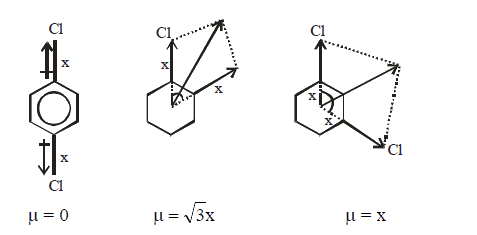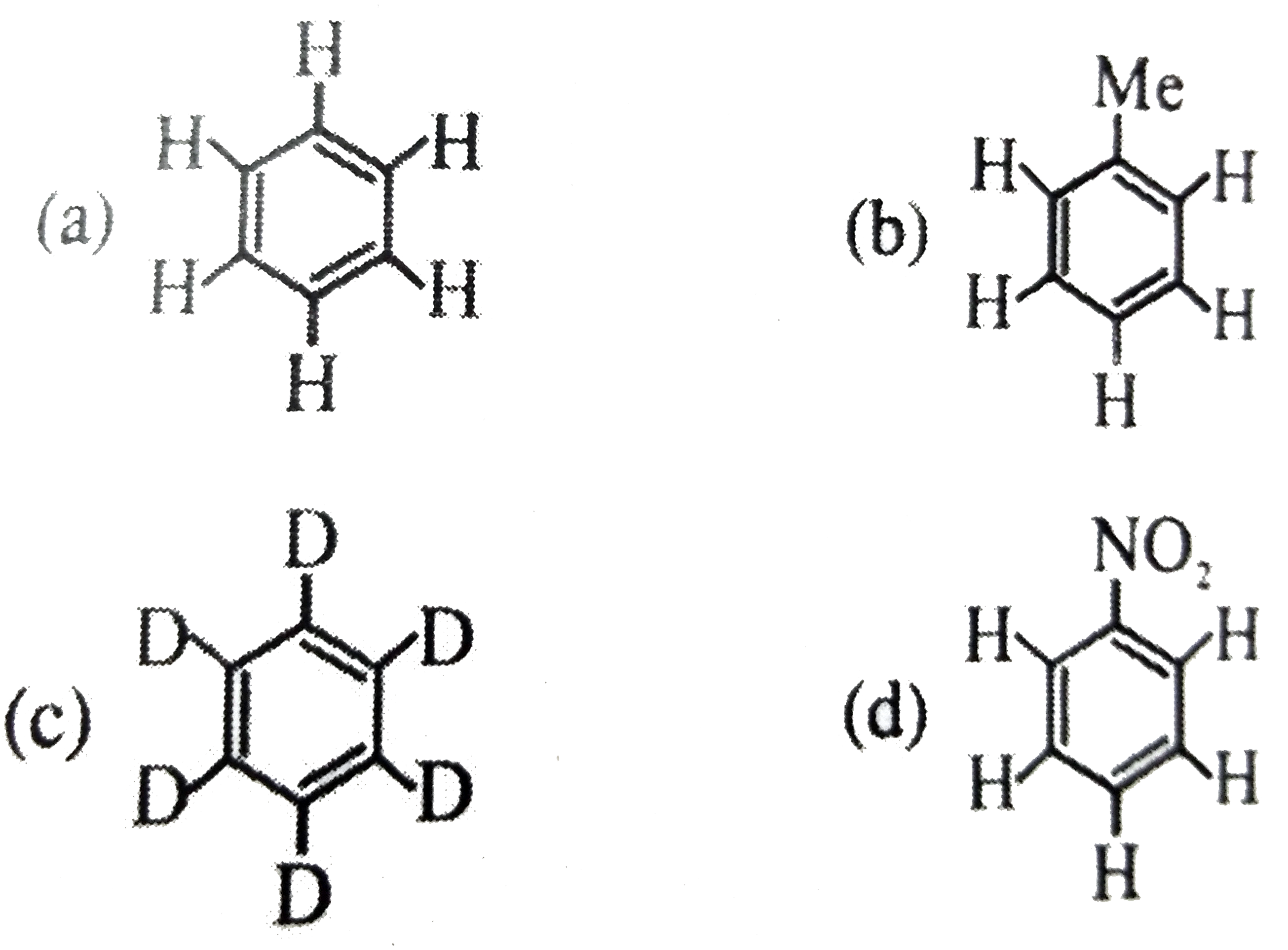Arrange the following in decreasing order of dipole moment
(1) m-Dichlorobenzene
(2) o-Dichlorobenzene (3) p-Dichlorobenzene
0>p>m
p>o>m
m>o>p
0>m>p
The correct Answer is:D

In p-dichlorobenzene, the two C-Cl diple (say x) are inclined at an angle of 60∘. Therefore, according to parallelogram law of forces, the resultant, dipole moment (μ)
=√x2+x2+2x×cos60∘
=√x2+x2+2x2×1/2
=√3x2=√3x
In m-dichlorobenzene, the two dipoles are inclined to each other at an angle of 120∘, thereofre, the resultant
=√x2+x22x×cos120∘
=x2+x2+2x2×(−1/2)
=√x2=x
Topper's Solved these Questions
- BOOK - VMC MODULES ENGLISHCHAPTER - CHEMICAL BONDING & MOLECULAR STRUCTURE EXERCISE - PRACTICE EXERCISE36videos
CHEMICAL BONDING & MOLECULAR STRUCTURE
- BOOK - VMC MODULES ENGLISHCHAPTER - CHEMICAL BONDING & MOLECULAR STRUCTURE EXERCISE - IN-CHAPTER EXERCISE-A10videos
CHEMICAL BONDING & MOLECULAR STRUCTURE
- BOOK - VMC MODULES ENGLISHCHAPTER - CHEMICAL BONDING & MOLECULAR STRUCTURE EXERCISE - IN-CHAPTER EXERCISE-L9videos
CHEMICAL BONDING & MOLECULAR STRUCTURE
- BOOK - VMC MODULES ENGLISHCHAPTER - CHEMICAL BONDING & CHEMICAL STRUCTURE EXERCISE - IMPECCABLE50videos
CHEMICAL BONDING & CHEMICAL STRUCTURE
- BOOK - VMC MODULES ENGLISHCHAPTER - CHEMICAL BONDING-I & IIEXERCISE - JEE Advanced (Archive)98videos
CHEMICAL BONDING-I & II
Similar Questions
Knowledge Check
- Question 1 - Select One
Arrange the following in decreasing order of E2 reaction :
 AX>Y>ZBX>Z>YCZ>X>YDY>X>Z
AX>Y>ZBX>Z>YCZ>X>YDY>X>Z - Question 2 - Select One
Arrange the following in decreasing order of E2 reaction :
 AX>Y>ZBX>Z>YCY>Z>XDZ>Y>X
AX>Y>ZBX>Z>YCY>Z>XDZ>Y>X - Question 3 - Select One
Arrange the following compounds in decreasing order of acidity :
 AR>Q>P>SBQ>R>P>SCS>R>Q>PDQ>P>R>S
AR>Q>P>SBQ>R>P>SCS>R>Q>PDQ>P>R>S
Arrange the following in decreasing order of stability
 View Solution
View SolutionArrange the following in decreasing order of rate of nitration :-
 View Solution
View SolutionArrange the following in decreasing order of their Ka value :
 View Solution
View SolutionPolar covalent molecules exhibit dipole moment. Dipole moment is equal to the product of charge separation , q and the bond length d for the bond. Unit of dipole moment is debye. One debye is equal to 10−18 esu cm.
Dipole moments is a vector quantity. It has both magnitude and direction. Hence, dipole moment of a molecule depends upon the relative orientation of the bond dipoles, but not on the polarity of bonds alone. A symmetrical structure shows zero dipole moment. Thus, dipole moment helps to predict the geometry of a molecules. Dipole moment values can be distinguish between cis- and trans- isomers, ortho, meta and pare-forms of a substance, etc.
Q. Arrange the following compounds in increasing order of dipole moments, toluene (I), o-dichlorobenzene (II), m-dichlorobenzene (III) and p-dichlorobenzene (IV) :View SolutionPolar covalent molecules exhibit dipole moment. Dipole moment is equal to the product of charge separation , q and the bond length d for the bond. Unit of dipole moment is debye. One debye is equal to 10−18 esu cm.
Dipole moments is a vector quantity. It has both magnitude and direction. Hence, dipole moment of a molecule depends upon the relative orientation of the bond dipoles, but not on the polarity of bonds alone. A symmetrical structure shows zero dipole moment. Thus, dipole moment helps to predict the geometry of a molecules. Dipole moment values can be distinguish between cis- and trans- isomers, ortho, meta and pare-forms of a substance, etc.
Q. Arrange the following compounds in increasing order of dipole moments, toluene (I), o-dichlorobenzene (II), m-dichlorobenzene (III) and p-dichlorobenzene (IV) :View Solution



